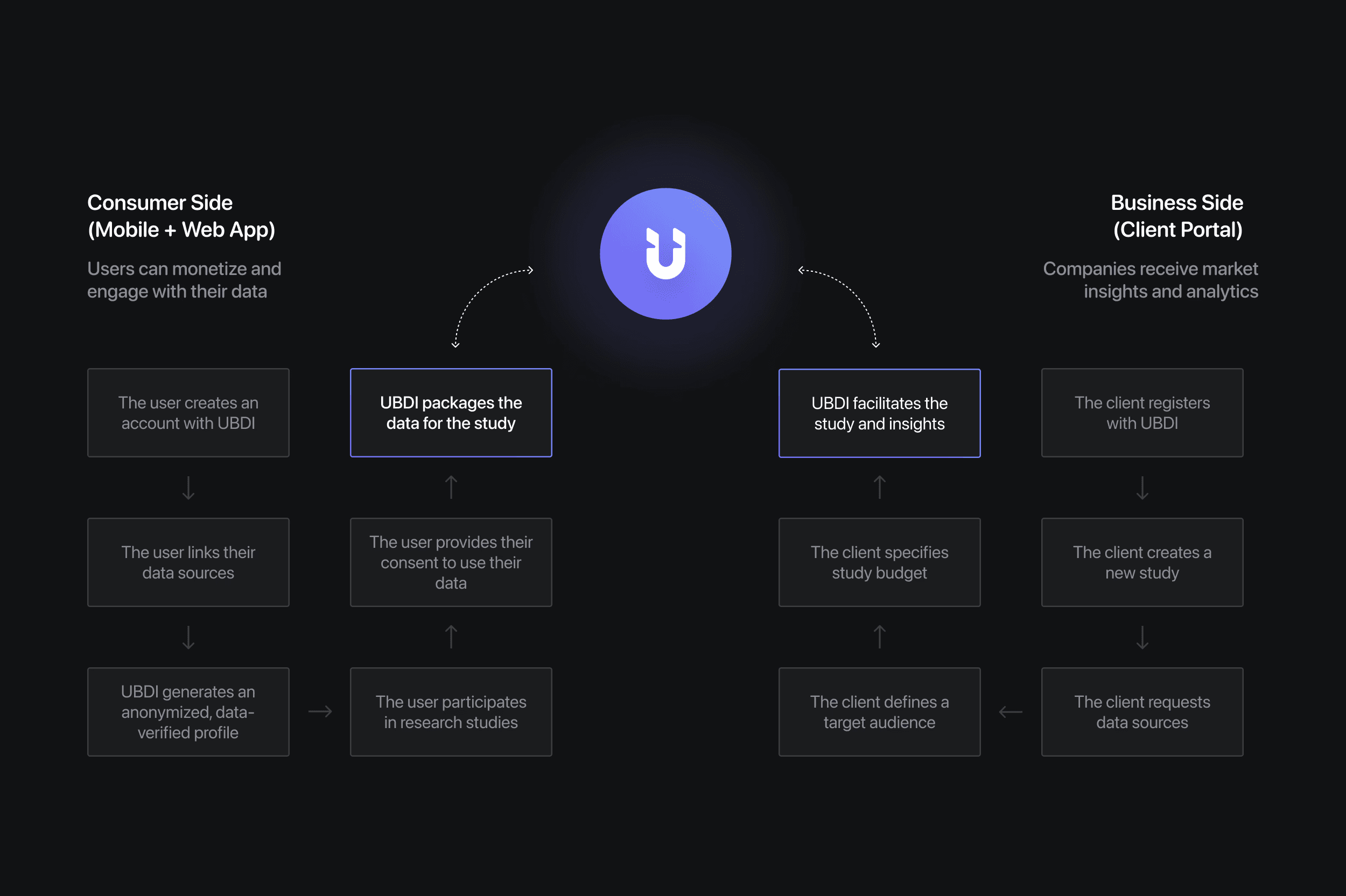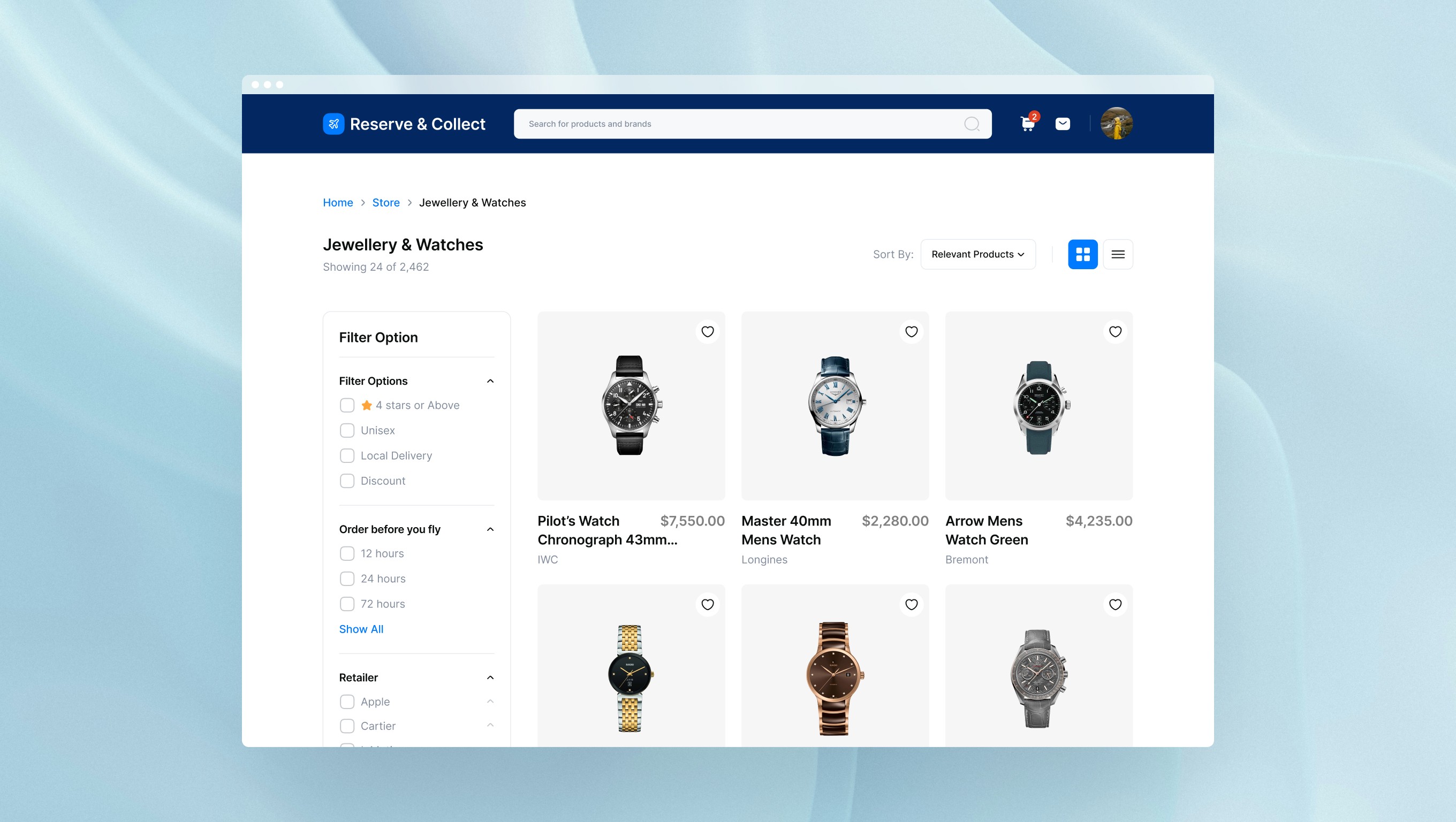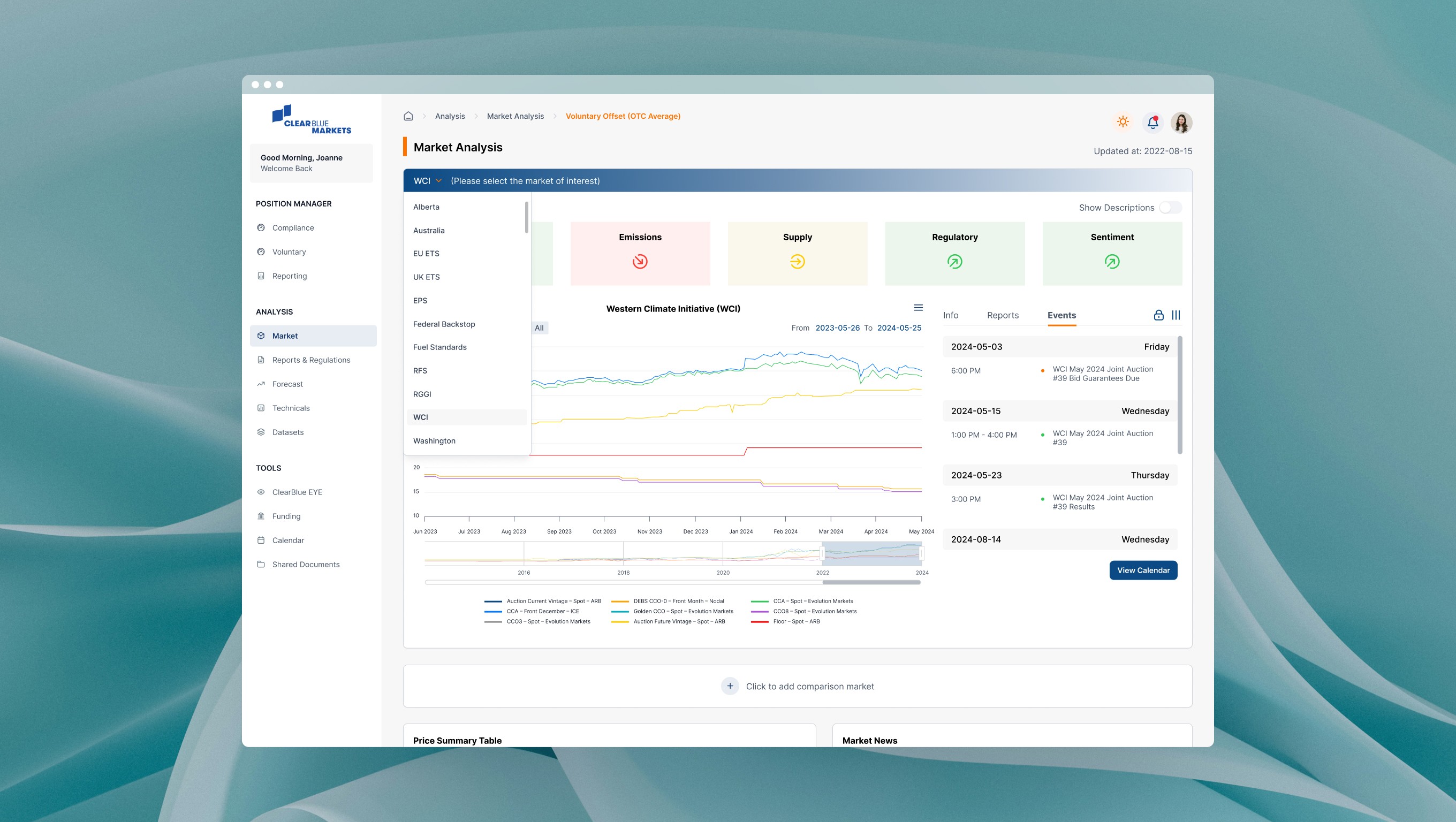Product Design, Consumer Social
Universal Basic Data Income
In 2020, I interned at UBDI (Universal Basic Data Income), a data monetization startup that enables users to anonymously talk, learn, and earn from their data. As a Product Designer, I led a portfolio of initiatives spanning UX, brand, and content design for the consumer side of its web and mobile app.
Role: Product Designer
Duration: June 2020 – September 2020 (4 months)
Team: Product Designer, Product Lead, Design Lead, 2x Engineers
Skills: Content Design, UX Design, Branding, Research
I. Overview
Context
UBDI was founded on the principle that customers in the digital age should have the right to monetize the data that organizations collect and disseminate without their consent. The consumer side of the platform enables individuals to anonymously link their insights and traits, providing access to exclusive communities and monetary benefits. The business side allows brands to tap into an aggregated network of verified, privacy-compliant audiences to run market research studies.

The Challenge
When I first joined UBDI, the company had just come out of beta and secured pre-seed funding. The next phase focused on repositioning the product, shifting from a traditional market research tool to a community-driven social platform. Launched under the name “Talk, Learn, Earn,” the initiative intended to help users:
Engage in anonymized, data-verified communities (e.g., gaming, fitness, crypto) through polls, discussions, and competitions.
Learn from patterns in their linked data sources like Strava, Reddit, Amazon, and Twitter.
Earn by monetizing aspects of their online presence using anonymized data points and personal traits.

My internship was structured around the following problem statement:
How might we evolve UBDI’s offering into a community-driven experience that empowers users to engage with their data in a fun, secure, and meaningful way?”
II. My Role
My Approach
Within the product development cycle, UBDI had already validated its problem space, formulated a hypothesis, and defined its feature set. I came in at the beginning of the UX phase, grounding my work on two core perspectives:
Wearing Multiple Hats: In a pre-seed startup, responsibilities are incredibly fluid: everyone is a generalist, and pitches in wherever they can. While my primary focus was designing UBDI’s consumer product, I also supported initiatives across customer support, engineering, and operations. These cross-functional experiences gave me deeper context into the company, team, and its users, helping me become more thoughtful and effective in my design role.
Polishing the Details: During the design process, I scheduled regular review cycles with the engineering team to identify and ship quality-of-life improvements. In routine audits, I’d flag bugs or missing micro-interactions, like pull-to-refresh and scroll-to-top, log a ticket, and bring them up during our catch-ups. While these were small fixes, they made the app feel much more intuitive and aligned with user expectations from similar social platforms.

My Process
A. Empathize
To better understand UBDI and its users, I spent the first few weeks of my internship working closely with marketing and customer support. I audited our social campaigns, PR materials, and design components to get a feel for the company’s brand identity: rooted in playfulness, vibrance, and simplicity. On the customer side, I partnered with our CS lead to respond to questions, feedback, and complaints through Intercom.
I also set up 1-on-1s with leads across sales, design, and engineering to align on UBDI’s vision and get up to speed on what had already been built. These conversations helped me build trust across the team and understand how different functions collaborate to ship product.
B. Create
By the end of the context phase, I had a clearer view on both the customer needs and business opportunities that UBDI was aiming to address. From there, I moved into design, using Figma to prototype and iterate on features in close collaboration with my Lead Designer, PM, and Engineer. Together, we solicited feedback early and often to pressure-test decisions from both technical and business perspectives.
My design efforts over the summer broadly fell under two categories:
Exploratory Design: My first project over the summer was UBDI Insights, a feature that pulled API data from a user’s linked accounts and turned it into a personalized carousel of insights. Since this was a 0-to-1 product that didn’t follow the app’s existing UI patterns, I took a more conceptual approach. Most of my time on this project was spent sketching ideas in a notebook and mapping out potential flows, drawing inspiration from experiences like Spotify Wrapped and Facebook's Year in Review.

Production Design: For features acting as an extension to the current interface, I worked within our design system to maintain consistency and scalability. For example, when designing UI patterns like in-app permission dialogs and modals, I used components from our existing library, reducing engineering effort and speeding up delivery. Similarly, since there was no consumer-facing web app yet, I used the B2B partner portal as a foundation, reworking elements where needed to save time without sacrificing quality. Compared to exploratory design, this approach was grounded in execution rather than exploration.

It’s worth calling out that these categories weren’t always mutually exclusive. My final project involved designing Community Profiles—a feature with no existing reference point, but one that still had to feel native to our mobile app. I started with loose, freeform concepts without worrying about design system constraints, and then validated them with stakeholders across engineering and product. Once the direction was locked, it was a relatively simple lift to align everything with UBDI’s mobile standards. Fun fact: this practice is known in the design process as "linting."
C. Handoff
To facilitate a seamless transition from design to development, I worked with my Design Lead to clearly document each feature (e.g., font styles, spacing, and touch targets). For more exploratory designs, we also captured interaction patterns like animation curves and timing. Before anything was handed off, I ran regular walkthroughs with the engineering team to validate the prototypes, clarify intent, and confirm feasibility. These conversations helped surface technical constraints early, which ended up saving us from a lot of last-minute headaches.
D. Handling
After launch, I would step into a QA role to make sure everything worked as expected in the production environment. My focus was on stress-testing edge cases, running through the flow across different screen sizes, devices, and scenarios that could break the experience. For bug reports funnelled through Intercom, I logged corresponding tickets on Instabug and followed up with customers once a fix was deployed. The goal was to ensure that the end result reflected what we’d built in the prototype, and what had been signed off by design, engineering, and product during handoff.
My Impact
With each project, I earned more trust from my Leads to independently make decisions that shaped UBDI’s desirability, feasibility, and usability. By the end of my internship, I had contributed to the launch of three new features for 40,000+ users:
Web App: Designed the first iteration of the consumer-facing web app, bringing the UBDI experience to desktop for the first time. This product shipped in October 2020.
Community Profiles: Led market research on profile pages, mapped the end-to-end user flow, and ran usability tests to validate my prototype. Pitched the concept to company leadership and secured buy-in. This feature shipped in September 2020.
UBDI Insights: Researched APIs and designed over 40 screens to transform user data from Amazon, Twitch, and Coinbase into personalized, story-like visuals. This feature was used in an experiment to gauge demand and inform a product pivot.

III. Reflections & Takeaways
Key Learnings
Distributed Collaboration: Like most companies during the pandemic, UBDI operated fully remotely. The Product and Sales functions were based in Southern California, the Engineering team was in Eastern Europe, and our Advisory board sat in Australia. With everyone spread across different time zones and work cultures, I had to be intentional about how I communicated, and learn how to make the most out of the async tools we had at our disposal.
Feedback Design: One of the most valuable lessons I took from this internship was that good feedback doesn’t just happen—you have to set the stage for it. In product design, that meant making my work easy to engage with and giving reviewers enough context to respond meaningfully. From organizing my canvas to framing better questions, I found that the more effort I put into making my work “feedback-friendly,” the more useful the input became, and the less defensive I felt receiving it.
Embracing Iteration: One of the first things I learned as a designer is that not everything you create will make it to production—and that’s okay! When we A/B tested UBDI Insights, we saw low engagement and ran into technical hurdles that made the feature difficult to scale. But the work still served a purpose: it gave us clear signals about what users actually wanted and helped us pivot to a simpler, more familiar flow. That project expanded how I think about design—not just as a tool for craft and aesthetics, but as a way to test ideas, learn from them, and guide product direction.

Conclusion
My summer at UBDI was challenging, rewarding, and a lot of fun. I helped shape the digital experience for thousands of users and led creative work from concept to delivery. A lot of the craft and execution skills I rely on today were built during that internship.
Taking on this role also made me realize how much I love driving the full product development process, and owning the outcomes. I revisited this interest from a broader lens during my time with the Ivey Product Society. Check out that case study here.
Discover more


